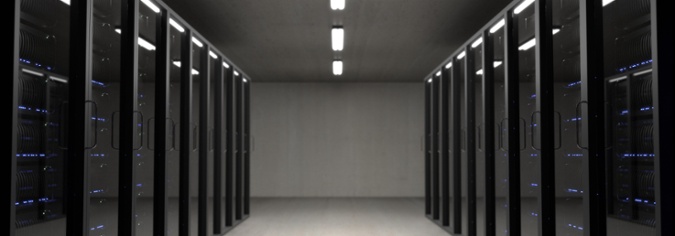
I started my tech career in, appropriately, a startup. We had a computer room. It was glassed in, so you could watch busy IT folks tending impressive large machines with lots of blinking lights. The floor was raised, and there was a state-of-the-art fire suppression system. Something you only thought about when you wandered in to ask the operators for some bit of data, and hoped you didn’t get trapped because that fire system apparently worked by sucking all the oxygen out of the room and by the way, killing any carbon-based life in the room at the time. The computer room was part of the standard office tour for visitors and we were justifiably proud of our obvious computing power.
Flash forward to today, when commercial datacenters are fortresses protected with razor wire and security systems. And inside the buildings, security is also high with checkpoints backed up by man traps and surveillance. Some datacenters are deliberately nondescript, located in seldom-frequented parts of cities and camouflaged in industrial grit, while others are isolated in the middle of nowhere to take advantage of cheap utilities. No big signage advertising ‘data stored here.’ Strategic management of heat and cooling to minimize energy usage. Focus on reliability, availability, redundancy.
And even with the proliferation of commercial datacenters, a lot of organizations still have their own computer rooms and datacenters. The fact is, there still has to be a datacenter. Somewhere. Whether it’s a datacenter you own, or you rent space from a colocation provider, or a vendor hosts your solution, or your application is cloud-based (SaaS, IaaS, PaaS or any kind of as-a-service), there’s still a datacenter providing compute.
More and more in our 451 Alliance in-depth interviews, we hear of executives talking about ‘getting out of the datacenter business’ so the organization can instead ‘focus on core competency.’ But it’s important to remember that even if the IT functions are not in-house or on-premises, there is still a datacenter. Computing still has to happen, along with the whole bundle of supporting infrastructure. Data has to be protected and stored. Machines must be secured, maintained, monitored, cooled, patched and backed up. The cloud is machines. Even the cloud is still a datacenter. Somewhere.
The Bottom Line for IT Pros
IT pros may need to educate the C-suite, to make sure that decision-makers understand that an organization can’t actually ‘get out of the datacenter business’; it can only outsource that ‘datacenter business’ to someone else. An organization that plans to outsource will need quite a bit of in-house IT expertise to accomplish the move, and must still retain IT staff for oversight. And many of our commentators tell us that their organizations possess intellectual property and proprietary information, crown jewels that won’t be leaving the premises, at least not any time soon. Which leaves those organizations with at least one tiny datacenter to manage. Somewhere. On-premises.
Do you have your finger on the pulse of tech trends? Join the 451 Alliance for exclusive research content on industry-wide IT advancements. Do I qualify?

